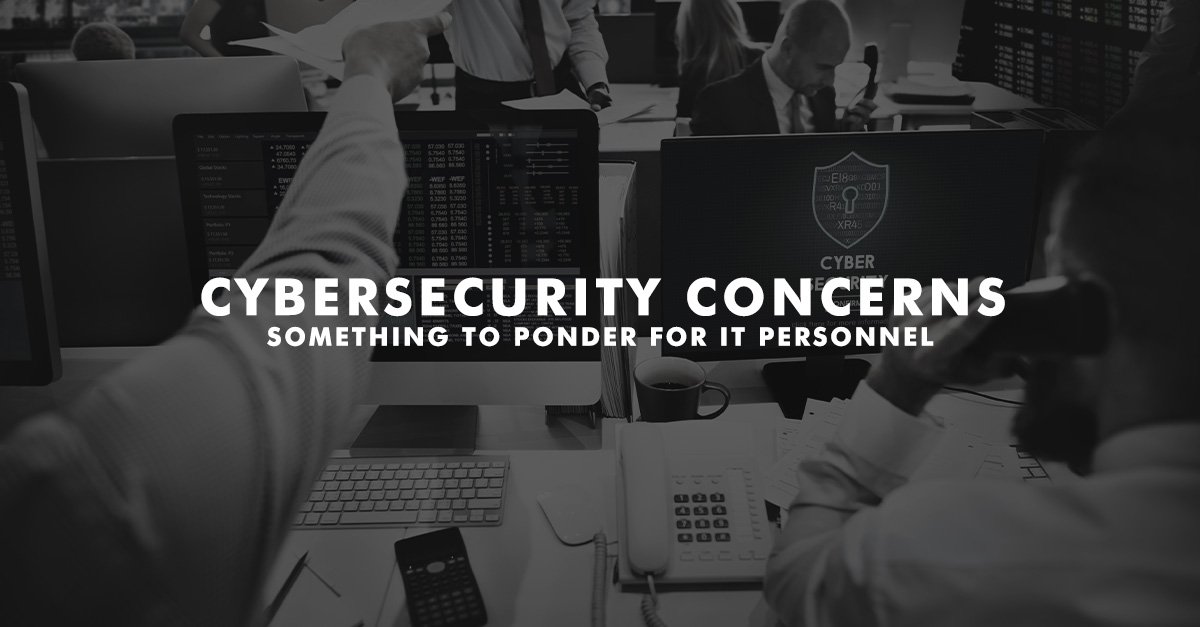
Cybersecurity Concerns: Something to Ponder for IT Personnel
“Cybersecurity has been the talk of the town for long, but since the COVID-19 pandemic emerged across the globe; the prevalence of the cyber security concerns has increased substantially, making it an utmost priority concern for the IT personnel.”
The COVID-19 pandemic struck the world out of nowhere, resulting in businesses facing unprecedented risks; a few went bankrupt, a few found it hard to survive, while a few managed to survive.
Cybersecurity concerns have been in place for a long. Most businesses operate online, the data exposes more than ever before, so business practices have become vulnerable to cyber risks.
While the pandemic has made the government impose the lockdowns; people adapt to new practices such as social distancing, and organizations switch to remote working. At the same time, it has also provided cyber attackers with an opportunity to use such moves.
As digitization has increased, people are working from home; and organizations have integrated most of their workforce and data through the clouds. Additionally, it has resulted in exposing the data to cyber attackers exponentially.
While the organizations’ people are finding ways to cope with the ill effects the pandemic has caused; the cyber attackers are using this as an opportunity to get the most of the exposed data leading to cyber threats for the organizations.
Major Factors Leading To CyberSecurity Risks:
A rise in the “Work from Home” Model:
Since almost every business has adopted the “Work from Home” model; due to strict lockdowns, online data usage has become more prevalent than ever before.
Moreover, students studying online, schools and colleges adopting the online model, corporates working online, and online shopping increasing substantially. It has led to data exposure more than ever before, resulting in the rise in cybersecurity risks.
Older Security Versions:
Just because cybersecurity concerns have increased doesn’t mean that organizations cannot handle it. The gap arises when organizations still use the older versions of cyber security measures integrated into their business practices.
Cyber attackers are coming up with new and innovative ways to attack; which sometimes remain untraceable with the older un-updated security versions.
Improper BCP (Business Continuity Plans):
Every organization has its business plans to deal with emergencies, cope with uncertainties, and mitigate risks.
While few organizations are known for implementing a well-defined business continuity plan and a framework, few lack it, which exposes the organizations to even more cyber security risks.
A situation like a pandemic is potential enough to hamper any business continuity plan, and hence, it becomes essential for the firms to deal with such unprecedented problems.
Something To Ponder For IT Personnel:
IT personnel in any organization forms the backbone of the IT infrastructure. They are the ones who integrate the business processes and data architecture.
And when any cyber risk occurs, they are the first to act upon and mitigate the existing IT issue. The rise in the number of cybercrime instances puts the IT personnel under additional work of taking care of the data and cyber security.
Implementing Informed Framework:
Data forms the utmost core of cyber security, and the exposure of the same data results in cybercrimes.
Having a well-defined informed framework that comprises reliable configured VPN (virtual private network) and integrated systems will help cope with the current cyber issues and combat future cyber threats.
Trace and Track Approach:
Cyber attackers, ransomware attacks, phishing emails are no more the traditional ones with misspelled names, unauthorized organizations, and suspected names that arise the urgency to get aware and prepared.
However, the cyber attackers in this era are much more sophisticated, innovative, and imitating in a way that is hard to trace.
Therefore, a “Trace and Track” Approach, dealing with the latest and updated measures to identify the ransomware and suspected unidentified issues to trace and track unattended cyber threat activities, will mitigate the cyber security issues.
Revised BCP (Business Continuity Plan):
Events like a pandemic arise the need to implement a revised business plan. Challenges of the pandemic have also arisen the need for a revised business plan to tackle the challenges.
A revised business continuity plan composed of measures derived from the cyber risk assessment of critical business processes needs to implement in the business practices to achieve a cyber risk averted environment.
Conclusion:
The pandemic has transformed businesses, the way they work, and in the same way, it has also changed the way cyber security issues arise.
The new way of business has led to new cyber security issues, resulting in the new framework of the cyber security measures and new policies to cope with the cyber security issues.
The IT personnel efforts and the working professionals’ efforts will be fruitful, including awareness, training and development programs, and much-needed informed decisions to tackle cyber security concerns.





